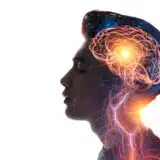Which Principle Underlines Cognitive Therapy?

Discovering the Ten Key Principles of Cognitive Behavioral Therapy (CBT): A Comprehensive Guide to Evidence-Based Therapy
What is Therapy? 10th May, 2023
Cognitive Behavioral Therapy (CBT) can essentially be encapsulated by the idea that your thought patterns influence your emotions. Nevertheless, experts in the field acknowledge that more guiding concepts are involved in CBT.
In her influential work, “Foundations of Cognitive Therapy: Expanding on the Core Concepts,” Judy Beck enumerates ten key principles that have been widely embraced by CBT therapists since the book’s release.

These principles delve deeper into the connection between thoughts and emotions, emphasizing the role of cognition in shaping an individual’s feelings and behaviors.
By understanding these tenets comprehensively, practitioners can better employ CBT techniques to help clients transform their thought patterns and improve their emotional well-being.
Core Tenets of Cognitive Behavioral Therapy
The following principles serve as the foundation for CBT. Each principle is crucial to the success of CBT, and together, they form a cohesive and evidence-based approach to therapy. CBT is a widely-used and effective treatment method for various mental health issues, ranging from anxiety and depression to addiction and trauma.

1. Dynamic Cognitive Formulation
CBT acknowledges the ever-changing nature of a client’s cognitive formulation and issues. Therapists must consider multiple factors in a person’s life, including their personal history, relationships, and cultural background, while being aware of the continuous evolution throughout childhood and therapy. This dynamic approach allows for a more personalized and adaptive treatment plan.
2. Strong Client-Therapist Relationship
A robust client-therapist relationship is crucial for CBT’s success. Establishing trust, rapport, and open communication paves the way for effective therapy. Clients should feel comfortable discussing their thoughts and feelings, while therapists need to demonstrate empathy and understanding, creating a safe environment for exploration and growth.
3. Collaboration and Active Participation
CBT emphasizes the importance of the therapist and client working together towards shared goals. Clients must be committed to their treatment, actively participating in sessions, practicing skills, and applying learned strategies outside therapy. Collaborative goal-setting and treatment planning help keep clients engaged and motivated.
4. Problem and Goal Focused
CBT targets specific problems and sets clear goals, making therapy more focused and manageable. By breaking down complex issues into smaller, more achievable objectives, clients can experience incremental progress, building confidence and a sense of accomplishment.
5. Present-Oriented
While acknowledging the influence of past experiences, CBT primarily concentrates on current issues and how they affect clients’ daily lives. Clients can develop effective coping strategies and work towards meaningful change by focusing on present-day challenges.
6. Educative and Empowering
CBT is educational, aiming to teach clients self-help skills, critical thinking, and emotional regulation. By emphasizing relapse prevention, therapists equip clients with the tools to maintain progress long after therapy, fostering independence and resilience.
7. Time-Limited Intervention
CBT is designed to be a time-limited intervention, with therapists striving to alleviate psychological symptoms within a predetermined number of sessions. This approach encourages the efficient use of therapeutic resources and helps clients focus on achieving measurable outcomes.
8. Structured Sessions
Structured sessions are integral to CBT, facilitating a more effective therapy progression. Each session typically follows a pattern, including agenda setting, review of homework, discussion of new topics, and homework assignments. This structure ensures consistency and maximizes the use of session time.
9. Addressing Dysfunctional Thoughts and Beliefs
CBT helps clients identify, assess, and address dysfunctional thoughts and beliefs. Clients can challenge and modify unhelpful cognitive patterns using cognitive restructuring, thought records, and behavioral experiments, improving emotional well-being and healthier behaviors.
10. Diverse Techniques for Change
CBT employs diverse techniques for altering thought processes, emotions, and behaviors. Practitioners draw on various tools, strategies, and skills, such as mindfulness, exposure therapy, and problem-solving, to help clients enact positive life changes. This flexibility allows therapists to tailor treatment plans to each client’s unique needs and preferences.
Advantages of Group Therapy in CBT
CBT group therapy provides participants with the opportunity to acquire skills and strategies to address:
- Anxiety
- Depressive cognitions
- Persistent rumination
The primary goal of group therapy is to increase individuals’ awareness of their unhelpful thought patterns and behaviors related to anxiety and depression.
In each session, participants are taught specific techniques to:
- Improve their emotional well-being.
- Effectively manage and cope with challenges.
- Minimize the likelihood of relapse in the future.
Through group therapy, participants also learn how to:
- Identify and counteract negative thoughts.
- Halt ruminative thinking
- Establish and maintain healthy core beliefs and behaviors.
- Replace unproductive thought patterns with more adaptive perspectives.
- Design and implement behavioral experiments to challenge anxiety and depression-related beliefs
- Develop action plans to address everyday difficulties.
- Scrutinize and modify negative core beliefs.
- Gain support from others facing similar challenges
- Obtain valuable information about mental health conditions and their management.
- Experience renewed hope by taking charge of their mental health and well-being.
Recommended:
What to Talk About in Therapy?
FAQs
What are the 5 principles of cognitive learning?
Active Participation
Meaningful Organization
Relevance
Feedback
Practice and Repetition
What is the underlying principle of cognitive therapy on Quizlet?
The underlying principle of cognitive therapy is that thoughts influence feelings and behaviors.
What is the cognitive behavioral principle?
Cognitive behavioral principles emphasize how thoughts, feelings, and behaviors are interconnected and influence each other.
What is the core principle of the cognitive model?
The core principle of the cognitive model is that our interpretations of events, rather than the events themselves, shape our emotions and behaviors.
What is the principle of the cognitive domain?
The principle of the cognitive domain refers to the level of mental processing, such as knowledge, understanding, and problem-solving, in educational settings.
The Bottom Line
CBT is a widely recognized and utilized therapy method globally due to its well-structured approach and evidence-based principles. Most CBT therapists concur that the ten principles outlined in this article form the cornerstone of their practice.
However, it is essential to note that CBT may not be suitable or effective for everyone. For individuals with more severe conditions, such as schizophrenia, implementing CBT can be challenging. CBT may not be the ideal choice for those with milder issues. Considering the advantages and disadvantages presented in this article, you can better determine if CBT is the most appropriate therapeutic option for your needs.




















